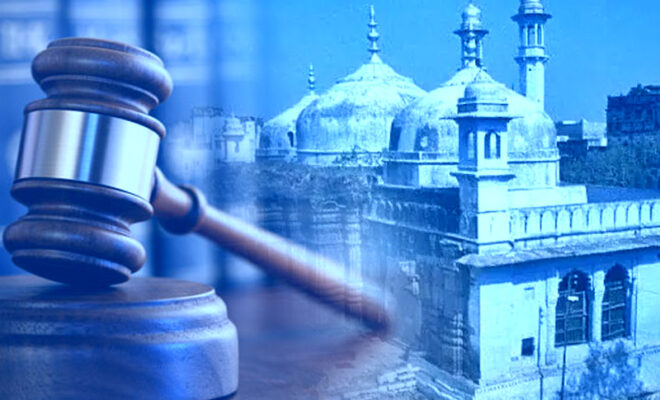ASI’s Scientific Survey May Unveil Ancient Gyanvapi Temple Mystery

The Gyanvapi case adjacent to the Kashi Vishwanath Temple in Varanasi, is at the center of this dispute. The core of the issue revolves around the claim that the mosque, built in the 17th century, stands on the ruins of an older ancient Indian temple.
Historical Roots of the Gyanvapi Dispute
The Archaeological Survey of India (ASI) undertook a detailed scientific survey of the mosque complex to investigate these claims. The primary purpose of this survey was to determine if the mosque indeed was constructed over a pre-existing temple.
This step was seen as crucial for bringing clarity to the long-standing dispute between the Hindu and Muslim communities over the Gyanvapi case.
The ASI’s Scientific Survey
The survey, initiated on August 4, lasted for over 100 days. The ASI employed advanced techniques, including ground penetrating radar.
It allowed them to examine what lies beneath the mosque’s surface without any invasive methods. This was in line with the Supreme Court’s directive to avoid any invasive actions during the survey.
Cultural & Religious Significance
During this extensive survey, the ASI team examined various parts of the mosque premises, including the inner and outer walls, the cellar, and other areas. However, they did not survey the ‘wuzukhana’ – the area where Muslims perform ablutions before prayers.
The Gyanvapi premises have been disputed for decades, with heightened tensions following the Supreme Court’s decision in the Ram Janmabhoomi case.
Hindu petitioners argue that a part of the Kashi Vishwanath temple was demolished by the Mughal invader Aurangzeb to build the mosque. Conversely, the Muslim side says that the mosque predates Aurangzeb’s reign.
The survey’s findings were highly anticipated and were expected to be submitted to the district court in Varanasi today, November 17.
This submission comes after the ASI requested an extension from the initial September deadline, citing unfinished work.
The outcome of this report could potentially have significant implications for both communities and the ongoing legal and social discourse surrounding the site.
Also Read: Uttarakhand Tunnel Collapse: What Is The Plan For Rescue Mission?
Awaiting The Court’s Verdict
First, If we look at the word ‘Gyanvapi’ alone, it is a Sanskrit word. We don’t find Sanskrit words in the names of mosques anywhere in the world.
Therefore, it is evident that the name Gyanvapi Mosque must not have been originally given. Such Sanskrit terms are only found in the names of temples.
Secondly, the Gyanvapi Mosque came into existence in the 17th century. It is claimed that this mosque is about 300 years old.
However, it is worldwide known that the Kashi Vishwanath Temple and the Gyanvapi Temple are thousands of years old. So, if a place has been in existence for thousands of years, it’s not possible to attribute something merely 300 years old to it.
Despite these facts, the court requires evidence and records. Therefore, the court is waiting for the ASI’s survey and reports. Let’s see what decision the court makes!



